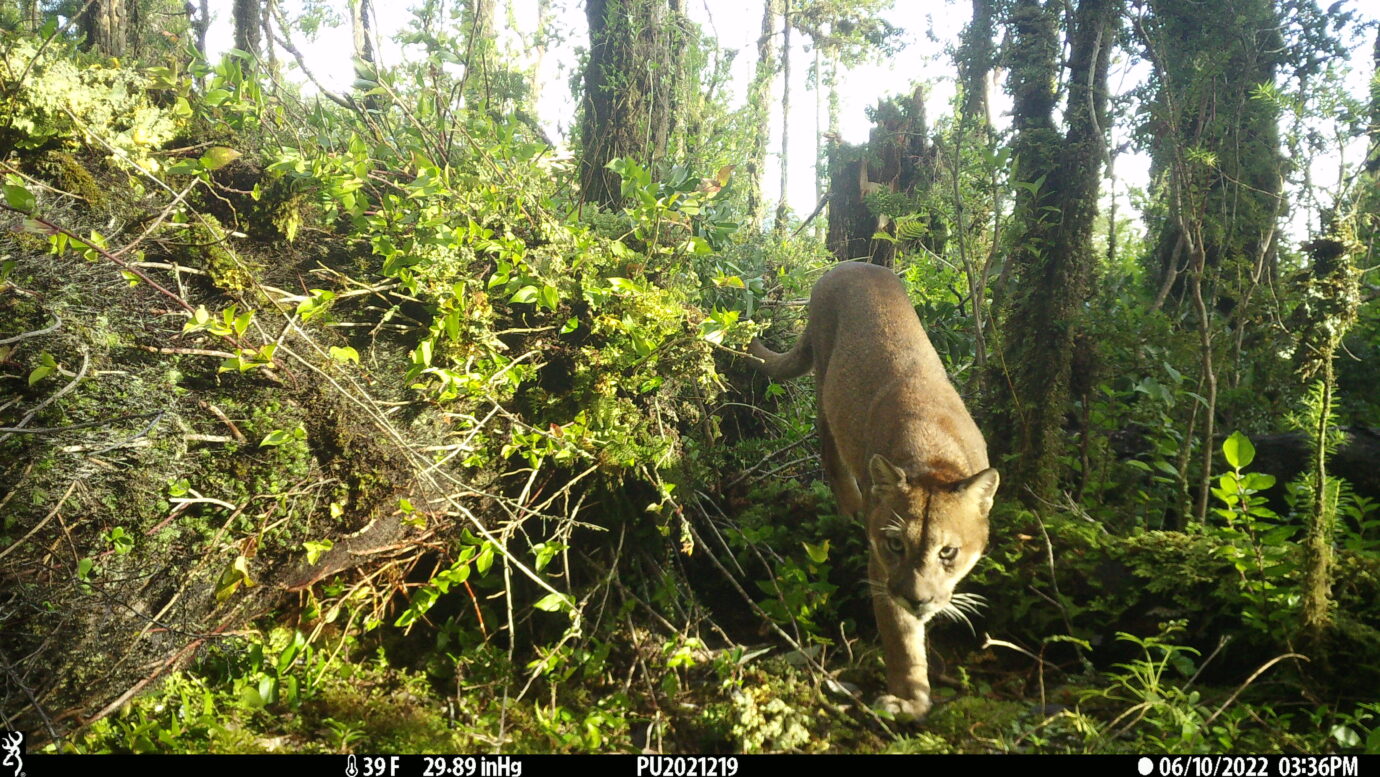
Primeras imágenes de las cámaras trampa en el Parque Nacional Pumalín Douglas Tompkins.
The records are the first obtained after the removal of 100 camera traps that were installed in 2021 in different corners of the National Park, thanks to the joint work of Rewilding Chile, Panthera, an international organization that works for the conservation of wild cats in the world, and the support of Conaf.

Primeras imágenes de las cámaras trampa en el Parque Nacional Pumalín Douglas Tompkins.
Among gigantic trees, ferns, quilas, and nalcas. They made their way through the evergreen forest with their clothes in tatters and a swarm of horseflies over their heads. The objective: to rescue the information from the 100 camera traps installed more than a year ago at strategic points and that hope to reveal the population densities and interactions between the species of wild cats in the area.
After ten days of work, the teams from Rewilding Chile and Panthera, an international organization that works to conserve wild cats worldwide, recovered 92 cameras. This effort is accompanied by an analysis that evaluates the abundance and distribution of pumas at the continental level.
"We believe it is essential to share this information with the community, who will be able to admire and appreciate the diversity of species that inhabit the park through the images recorded. Given the development and density of the vegetation in this area, it is not so common to see these species when walking the trails. However, the cameras reveal part of a secret natural world with images of some of its protagonists and their interactions in time and space in the depths of the forest," explains Cristián Saucedo, Wildlife Director of Rewilding Chile.
In the first reviews of the images obtained, a great diversity of birds and even the endangered huillín have been detected. In addition, in most of the monitored stations, species in the threatened category, such as pumas, guiñas, and pudúes. These findings demonstrate the excellent state of conservation of this protected area.
“It has been very technical work and a massive deployment in terms of the number of camera traps and the monitoring time involved. The study, as designed, will help us to know the population densities of these species, being the first estimates of this type in the country,” explains Dr. Omar Ohrens, a researcher with Panthera’s puma program.
Cristián Saucedo affirms that the information gathered will contribute as a relevant input for the actions contemplated by CONAF’s management and conservation plan in the National Park. “This is a collaborative work of the three entities, CONAF, Panthera, and Rewilding Chile, which highlights the enormous value of Pumalín DT National Park, so we hope to contribute with crucial information to support the actions that CONAF deploys in the territory,” he explains.
The next stage will consist of a detailed analysis of the information obtained by the team and the generation of specific technical reports. It is planned that these cameras will be moved and installed in Patagonia National Park to include the Aysén region in this continental analysis.